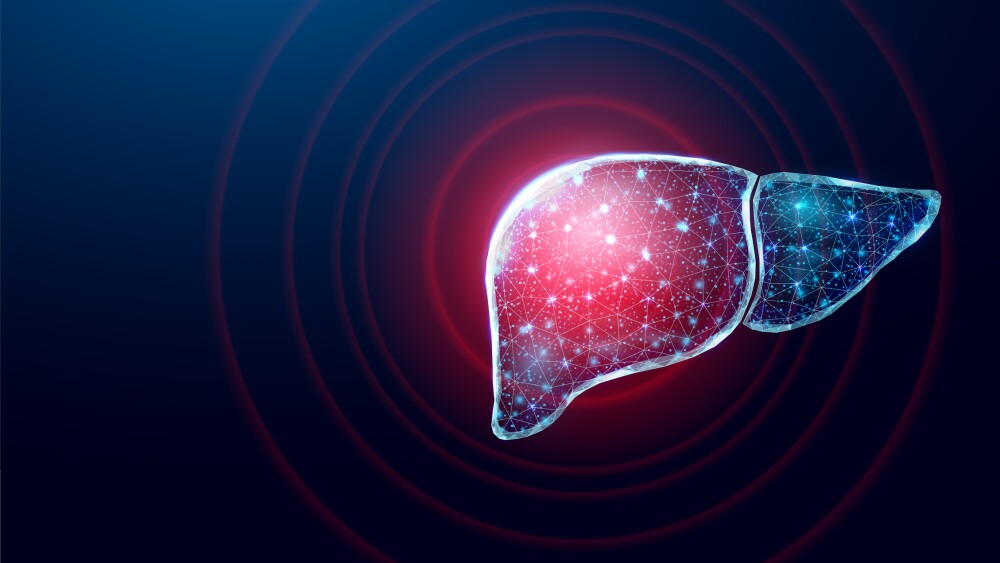Humacyte, Inc. today announced that five-year data from a Phase 2 clinical trial of patients receiving the investigational Human Acellular Vessel (HAV) for arteriovenous (AV) access in hemodialysis have been published in the European Journal of Vascular and Endovascular Surgery companion journal EJVES Vascular Forum.
-- Five-year data demonstrate the potential of the Human Acellular VesselTM (HAV) to be a durable and safe option for vascular access for routine, long-term hemodialysis --
-- Results published in EJVES Vascular Forum --
DURHAM, N.C., Feb. 28, 2022 (GLOBE NEWSWIRE) -- Humacyte, Inc. (Nasdaq: HUMA), a clinical-stage biotechnology platform company developing universally implantable bioengineered human tissue at commercial scale, today announced that five-year data from a Phase 2 clinical trial of patients receiving the investigational Human Acellular Vessel (HAV) for arteriovenous (AV) access in hemodialysis have been published in the European Journal of Vascular and Endovascular Surgery companion journal EJVES Vascular Forum. The manuscript, entitled, “Five-year outcome in patients with end-stage renal disease who received the bioengineered human acellular vessel for dialysis access,” reports the durable long-term use and ongoing clinical function of the HAV in patients with end-stage renal disease who are undergoing hemodialysis.
In the Phase 2 long-term follow-up data, the HAV was observed to provide routine and functional hemodialysis access for patients with end-stage renal disease who require dialysis three times a week. At month 60, patency allowing for reliable dialysis access cannulation was estimated at 58.2% of evaluable patients (i.e., those who completed the original 24-month study with patent HAVs and consented to participate in the long-term follow up) (95% confidence interval: 39.2 to 73.1%), after censoring for deaths and withdrawals. While there was no comparator in this Phase 2 trial, historical reports of arteriovenous fistula (AVF), currently the most prevalent method of providing hemodialysis access, indicate an approximately 30% functional patency of evaluable patients at five years1. In addition, no infections of the HAV were reported during the five-year follow-up period, with the HAV being well tolerated and non-immunogenic.
“Patients with end-stage renal disease require chronic vascular access for hemodialysis, and those who are not candidates for fistulas must rely on synthetic arteriovenous grafts, which have a higher rate of complications including an increased risk of infection,” said Prof. Tomasz Jakimowicz, M.D., Ph.D., of the Medical University of Warsaw, Poland, and principal investigator of the trial. “I am encouraged by the results from this trial because in addition to retaining structural integrity needed for hemodialysis, the HAV was observed to have a low risk of infection with long-term use. These results indicate the potential of the HAV as a promising option for vascular access in hemodialysis.”
“We’re pleased to share these promising data, representing the longest-term follow-up of any trial of implanted bioengineered human vascular tissue and 133 cumulative patient years of HAV exposure, with our scientific peers,” said Laura Niklason, M.D., Ph.D., Chief Executive Officer of Humacyte. “The data reinforce our earlier observations regarding the safety, durability and potential to become living tissue of Humacyte’s investigational engineered off-the-shelf replacement vessels. We look forward to our continued late-stage evaluation of the HAV in AV access, vascular trauma repair and peripheral arterial disease, while advancing our earlier stage work in complex tissue constructs and organ systems.”
The full manuscript can be accessed at: https://doi.org/10.1016/j.ejvsvf.2022.01.003.
As a follow-up to the Phase 2 trial described in the publication, the Company is currently conducting a Phase 3 trial in up to 240 dialysis patients. The Phase 3 trial is a prospective, multi-center, open-label, randomized, two-arm comparative trial designed to assess the usability of the HAV for dialysis at six and 12 months as a comparison to autogenous fistulas. As of December 31, 2021, 207 patients had been enrolled in the Phase 3 trial. The HAV is an investigational product candidate and is not currently approved for sale by the FDA or any international regulatory authority.
About the Data
- The prospective Phase 2 trial evaluated the HAV in 40 adult patients with end-stage renal disease undergoing hemodialysis at three sites in Poland.
- Of those 40 patients, 29 completed the originally specified 24-month Phase 2 trial with patent HAVs and provided consent to be followed for HAV conduit status every three months thereafter through at least five years.
- Secondary patency was 58.2% (95% CI; 39.2-73.1%) at five years, after censoring for deaths and withdrawals.
- Long-term explant samples showed progressive host-cell remodeling of the HAV, including an adventitial layer with neovascularization and recellularized medial layer that were observed in histological imaging, further strengthening the hypothesis that the HAV may regenerate into a living vascular tissue.
- In the five years after HAV implantation, no infections of the HAV were noted and no clinical evidence of immunological rejection was observed.
About HAV
Human Acellular Vessels (HAV) are investigational engineered off-the-shelf replacement vessels initially being developed for vascular repair, reconstruction and replacement. HAV is intended to overcome long-standing limitations in vessel tissue repair and replacement – it can be manufactured at commercial scale, it eliminates the need for harvesting a vessel from a patient, and clinical evidence suggests that it is non-immunogenic, infection-resistant, and can become durable living tissue. The HAV is currently being evaluated in two Phase 3 trials in arteriovenous access and a Phase 2/3 trial for vascular trauma, and has been used in more than 460 patient implantations. Humacyte’s 6mm HAV for AV access for performing hemodialysis was the first product to receive Regenerative Medicine Advanced Therapy (RMAT) designation from the U.S. Food and Drug Administration (FDA), and the HAV technology has also received FDA Fast Track designation.
About Humacyte
Humacyte, Inc. (Nasdaq: HUMA) is developing a disruptive biotechnology platform to deliver universally implantable bioengineered human tissues and organs designed to improve the lives of patients and transform the practice of medicine. The Company develops and manufactures acellular tissues to treat a wide range of diseases, injuries and chronic conditions. Humacyte’s initial opportunity, a portfolio of human acellular vessels (HAVs), is currently in late-stage clinical trials targeting multiple vascular applications, including vascular trauma repair, arteriovenous access for hemodialysis, and peripheral arterial disease. Preclinical development is also underway in coronary artery bypass grafts, pediatric heart surgery, treatment of type 1 diabetes, and multiple novel cell and tissue applications. Humacyte’s 6mm HAV for AV access for performing hemodialysis was the first product candidate to receive the FDA’s Regenerative Medicine Advanced Therapy (RMAT) designation, and the HAV technology received priority designation for the treatment of vascular trauma by the U.S. Secretary of Defense. For more information, visit www.Humacyte.com.
Forward-Looking Statements
This press release contains forward-looking statements that are based on beliefs and assumptions and on information currently available. In some cases, you can identify forward-looking statements by the following words: “may,” “will,” “could,” “would,” “should,” “expect,” “intend,” “plan,” “anticipate,” “believe,” “estimate,” “predict,” “project,” “potential,” “continue,” “ongoing” or the negative of these terms or other comparable terminology, although not all forward-looking statements contain these words. These statements involve risks, uncertainties and other factors that may cause actual results, levels of activity, performance or achievements to be materially different from the information expressed or implied by these forward-looking statements. Although we believe that we have a reasonable basis for each forward-looking statement contained in this press release, we caution you that these statements are based on a combination of facts and factors currently known by us and our projections of the future, about which we cannot be certain. Forward-looking statements in this press release include, but are not limited to, statements regardingthe initiation, timing, progress, and results of our preclinical and clinical trials; the anticipated characteristics and performance of our HAVs; our ability to successfully complete, preclinical and clinical trials for our HAVs; the anticipated benefits of our HAVs relative to existing alternatives; the anticipated commercialization of our HAVs and our ability to manufacture at commercial scale; the implementation of our business model and strategic plans for our business; our rights and obligations under our partnership with Fresenius Medical Care; the scope of protection we are able to establish and maintain for intellectual property rights covering our HAVs and related technology; the timing or likelihood of regulatory filings and approvals; timing, scope, and rate of reimbursement for our HAVs; and our estimated available market opportunity. We cannot assure you that the forward-looking statements in this press release will prove to be accurate. These forward-looking statements are subject to a number of significant risks and uncertainties that could cause actual results to differ materially from expected results, including, among others, the impact of COVID-19 on Humacyte’s business, changes in applicable laws or regulations, the possibility that Humacyte may be adversely affected by other economic, business, and/or competitive factors, and other risks and uncertainties, including those included under the header “Risk Factors” in the registration statement on Form S-1, as amended, filed by Humacyte with the SEC. Most of these factors are outside of Humacyte’s control and are difficult to predict. Furthermore, if the forward-looking statements prove to be inaccurate, the inaccuracy may be material. In light of the significant uncertainties in these forward-looking statements, you should not regard these statements as a representation or warranty by us or any other person that we will achieve our objectives and plans in any specified time frame, or at all. The forward-looking statements in this press release represent our views as of the date of this press release. We anticipate that subsequent events and developments will cause our views to change. However, while we may elect to update these forward-looking statements at some point in the future, we have no current intention of doing so except to the extent required by applicable law. You should, therefore, not rely on these forward-looking statements as representing our views as of any date subsequent to the date of this press release.
Humacyte Investor Contact:
Joyce Allaire
LifeSci Advisors LLC
+1-617-435-6602
jallaire@lifesciadvisors.com
investors@humacyte.com
Humacyte Media Contact:
Heather Anderson
6 Degrees
919-827-5539
handerson@6degreespr.com
media@humacyte.com
1 Lok, C. et al, CJASN May 2013, 8 (5) 810-818.





